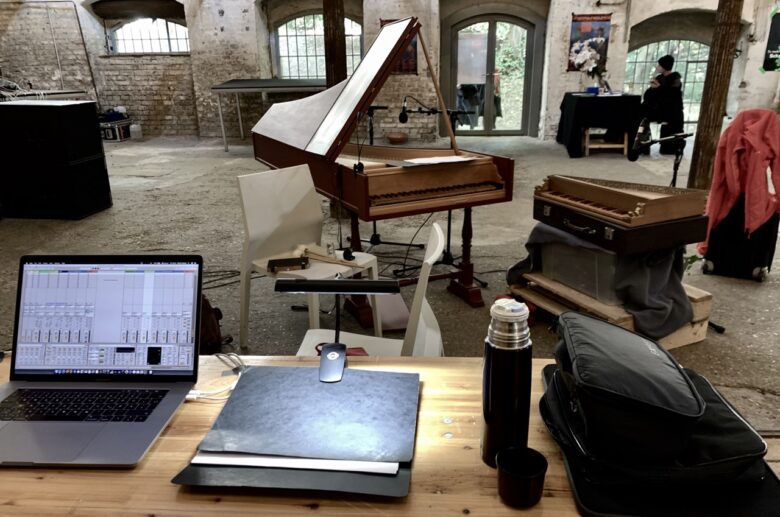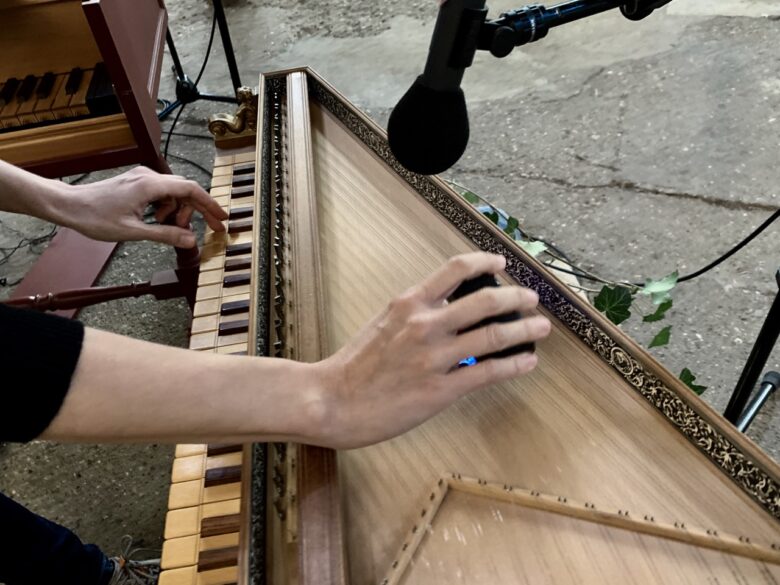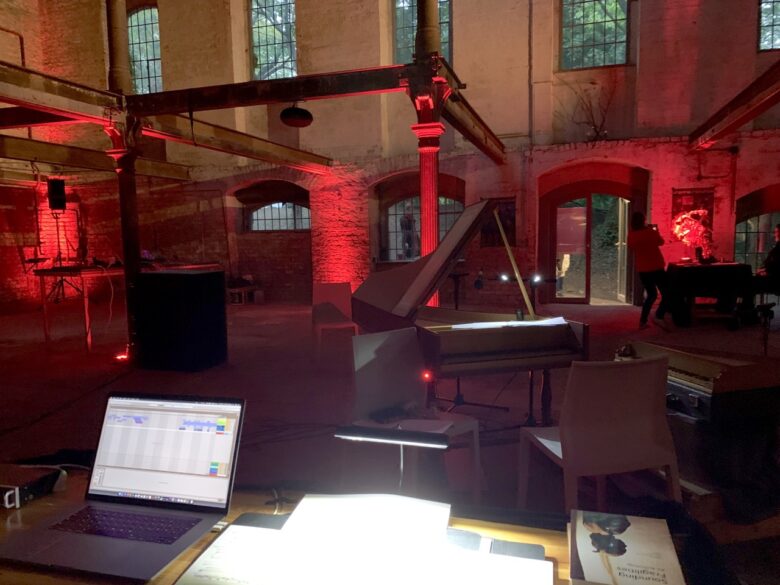#baroque_noise #contemporary #harpsichord #ambient #chaconne #hiddenwaters

VANISHED SHORELINES | verschwundene Ufer
A piece for extended harpsichord(s) with a microtonal tuning, and electronics (4-channel) including live processing of a harpsichord – duration 35′ – 40′
First performed by Sonja Leipold and Pia Palme @Unsafe+Sounds Festival 2022, Zacherlfabrik 30/09/2022.
About the piece
This piece contains various modules with different sonic textures and ambient-like intersections. Baroque opulence mixes with noise and reduced drone-like soundscapes. Some parts are structured like contemporary Chaconne. The composition makes use of the rich vocabulary of extended harpsichord techniques as they are practiced by Sonja Leipold – without her, the piece would not have come into being. The score includes composed passages and specified improvisation passages for the harpsichords. The electronic part integrates field recordings from the forests at the Finnish coast at Saarinen Kartano. Harpsichordist Sonja Leipold performs with two different harpsichords with specific microtonal tunings.
The live recording of our performance at the Unsafe+Sounds Festival 2022 (sound and recording by Sebastian Meyer) is available here:
The idea, the temporalities and title of the piece
The piece is dedicated to the various waters that have formed the landscape around the performance venue, the Zacherlfabrik in the Viennese district Döbling. The Zacherl Villa and factory hall were originally situated near a small river, the Arbesbach, a tributary to the Danube. The Arbesbach originates from the hills and forests of the Wienerwald, the forest that surrounds the city in the North-West. the river was enclosed in the 19th century and thus vanished from sight, shortly after the Zacherlfabrik was built. However, the park that surrounds the Zacherfabrik still breathes the atmosphere of a river valley in a forest – it is cool, green and shaded, covered in mosses, with the smell of humid leaves composting underneath old trees.
Looking back into the geology of the place, one learns that this valley was formed by the ocean Thetys, millions of years ago, during the Mesozoic and Cenozoic Era. The region that now hosts the city once was part of the shoreline of an ancient shallow sea; it was formed by these waters. Sediments, maritime rock- and sand formations as well as the remnants of shells and sea animals can still be found near the Zacherlfabrik. I also had these sea waters in mind when composing the piece. All the oceans on Earth are connected, and they are still changing their form and shape.
This can be observed in Finland: the land is still rising from the waters of the Baltic Sea. The sea is becoming more shallow and withdraws – a process that might be similar to what happened in the area of Vienna a long time ago, when the alps were still forming and rising. Therefore, I integrated processed and recomposed field recordings of Finnish waters. I took these recordings in 2022 during an artist residence near Turku, in forests, along the coast and the archipelago. In this Finnish landscape, the process of change can be observed today. The Earth is still re-forming its surface, even if we, as humans, perceive it as solid.
While composing this piece, I reflected on these slow yet steady processes and their non-human temporalities. I listened into the sedimented history of a landscape and into how its bodies of water are changing, together with us, the humans, and the non-human environment. The silvery sound of the harpsichord always reminds me of the flowing movement of water on a shore. This drew me into a different sense of time and duration when creating this music, and inspired me to work with the format of the Chaconne (with slow cycles) and with drone-like passages.



All fotos @Pia Palme